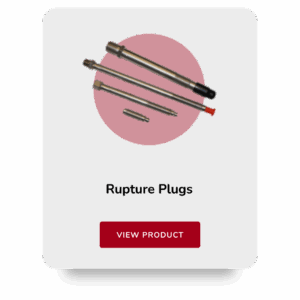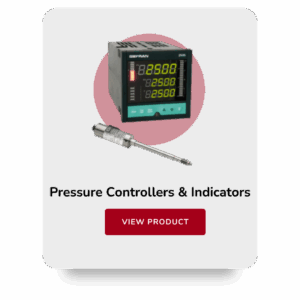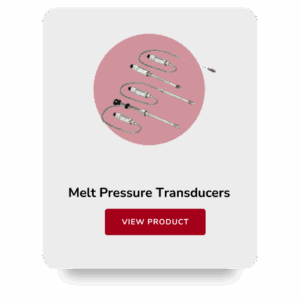Authored By Isabel McCord
Prioritizing Safety in the Plastic Industry: The Role of Pressure Devices
When it comes to the plastic industry, high temperatures and extreme pressures are a part of everyday operations—especially in processes like extrusion, injection molding, and blow molding. These intense conditions make efficiency possible but also pose significant safety risks if not properly monitored and controlled. That’s where safety-critical devices like rupture plugs, pressure controllers and indicators, and melt pressure transducers come into play.
Rupture Plugs: The Last Line of Defense
Think of rupture plugs as the emergency exits of your system. They’re designed to burst at a specified pressure, relieving excess pressure and preventing catastrophic equipment failure. In the fast-paced world of plastic processing, where a blocked nozzle or overheating barrel can quickly escalate, rupture plugs provide peace of mind.
What makes them essential is their simplicity and reliability. With no moving parts or electronics, rupture plugs don’t fail the same way mechanical sensors might. Once activated, they provide a clear, unmistakable sign that something has gone wrong—and help operators avoid injuries and costly equipment damage.
Rupture Plug Highlights:
- One-time-use safety device for pressure relief
- No electronics or moving parts, extremely reliable
- Protects equipment and personnel from overpressure
- Ideal for backup safety in extrusion and molding
Pressure Controllers and Indicators: Keep It in the Green Zone
Prevention is always better than reaction, and that’s where pressure controllers and indicators come in. These tools offer real-time readings of what’s going on inside your machine. By continuously monitoring the pressure within a plastic extruder or molding system, operators can make quick decisions to adjust settings, reduce feed rates, or shut down the system entirely before reaching dangerous levels.
Advanced pressure controllers even allow for automation controlling valves and heaters to keep operations within a safe range. This not only enhances safety but also improves consistency and product quality.
Controller & Indicator Highlights:
- Real-time pressure monitoring
- Visual/audible alerts for abnormal conditions
- Prevents unsafe conditions before they escalate
- Can be integrated with automation systems for safety and consistency
Melt Pressure Transducers: Precision Meets Protection
Melt pressure transducers are the unsung heroes of modern plastic processing. Installed directly into the melt stream, these sensors provide precise, real-time data on the pressure of the molten plastic. That information can then be fed to a controller, displayed on a monitor, or logged for quality assurance.
Their accuracy is critical—not just for ensuring product uniformity, but also for catching issues early. A sudden spike in melt pressure can indicate a clogged screen, a malfunctioning valve, or material inconsistencies. With the right setup, these sensors can even shut down the machine automatically if dangerous pressure levels are reached.
Melt Pressure Transducer Highlights:
- Accurate, real-time pressure readings in the melt stream
- Critical for detecting blockages and inconsistencies
- Enables automated shutdowns to prevent damage
- Improves safety and product quality simultaneously
Safety Isn’t Optional—It’s Operational
In the plastic industry, safety devices are more than just accessories—they’re essential. Rupture plugs, pressure controllers and indicators, and melt pressure transducers work together to create a system that’s not only efficient but also safe for workers and equipment.
By investing in these technologies and regularly maintaining them, businesses can reduce downtime, prevent accidents, and ensure consistent, high-quality production. Because at the end of the day, safe operations are smart operations.
👉 For more safety guidelines and best practices, visit the OSHA: Plastics Industry.




